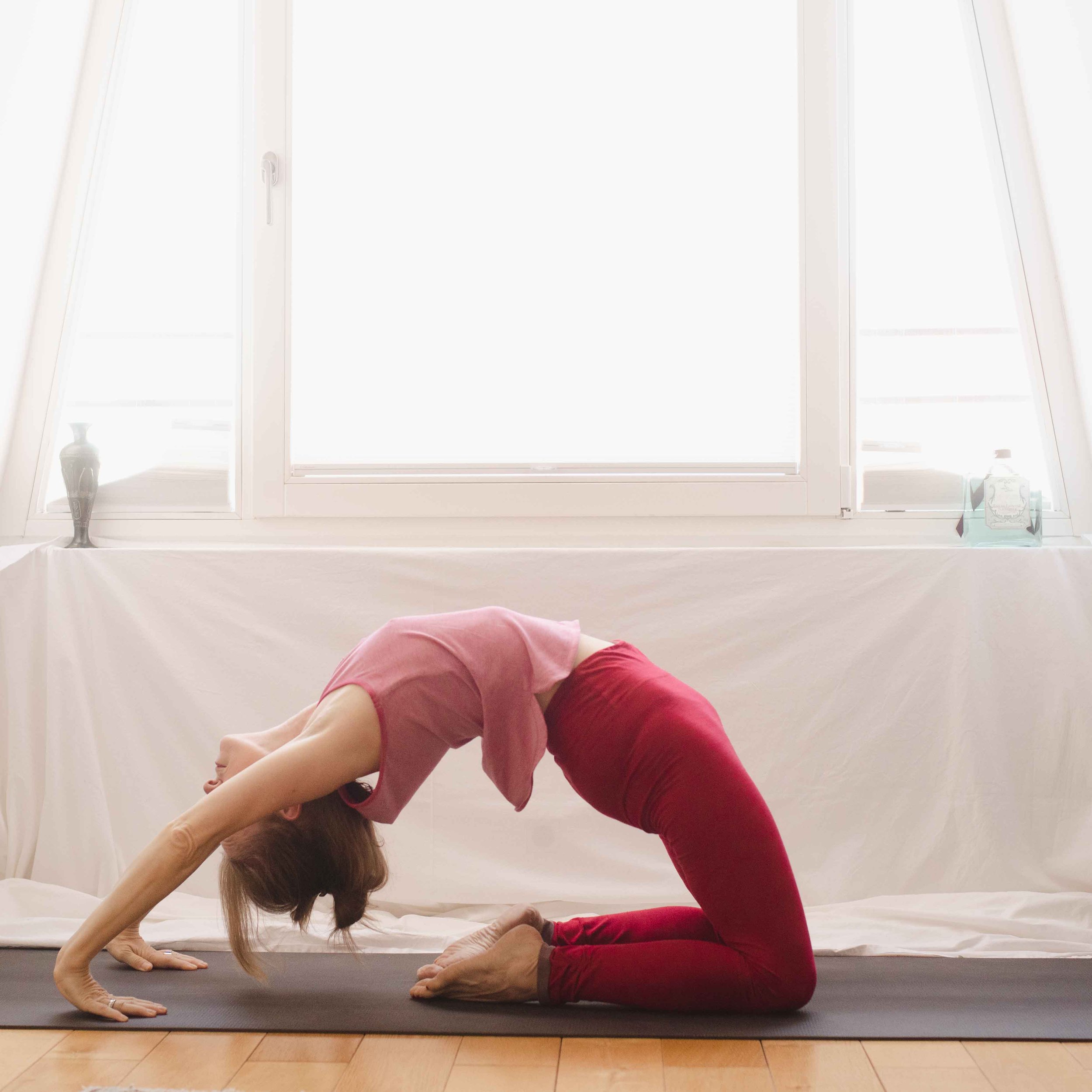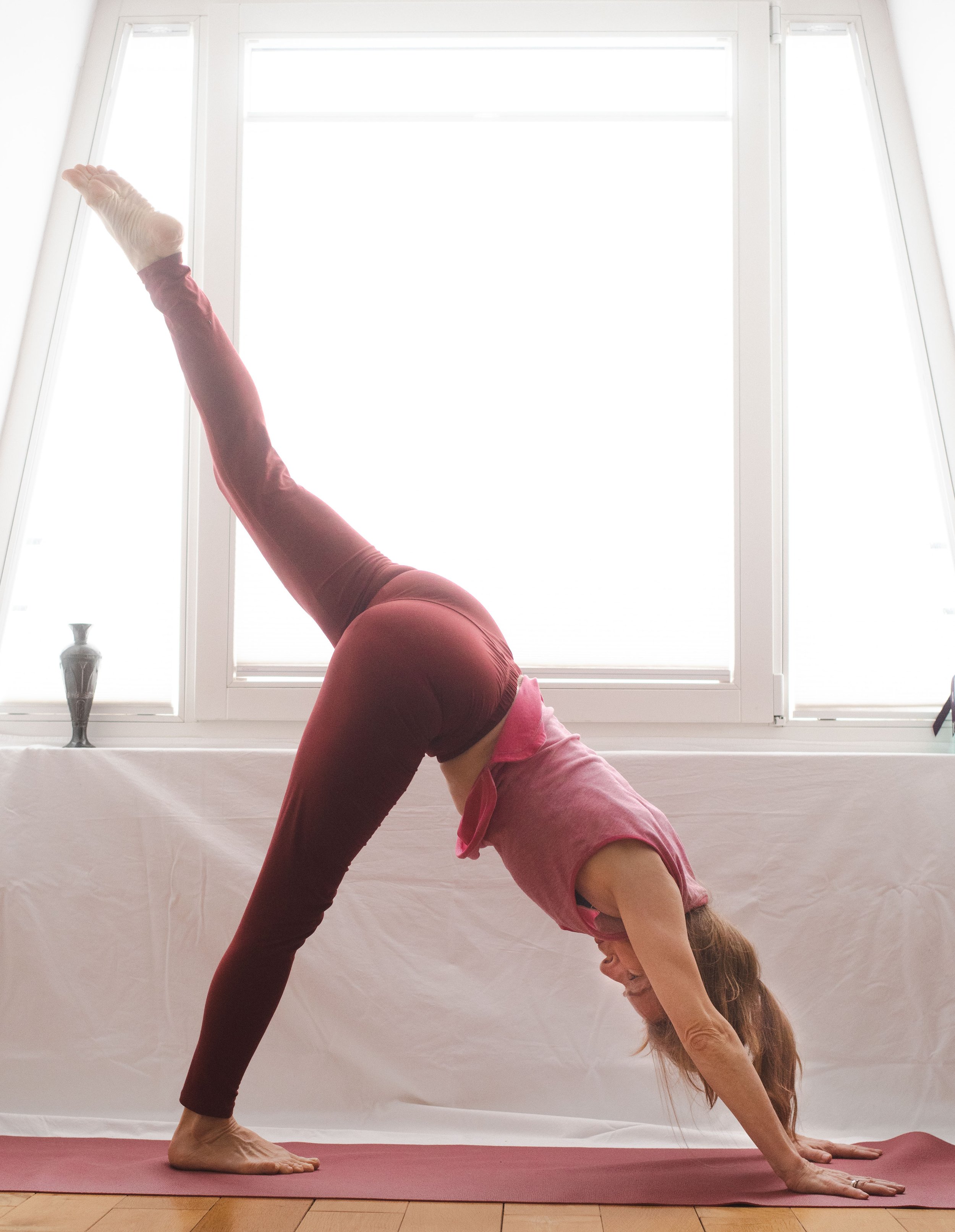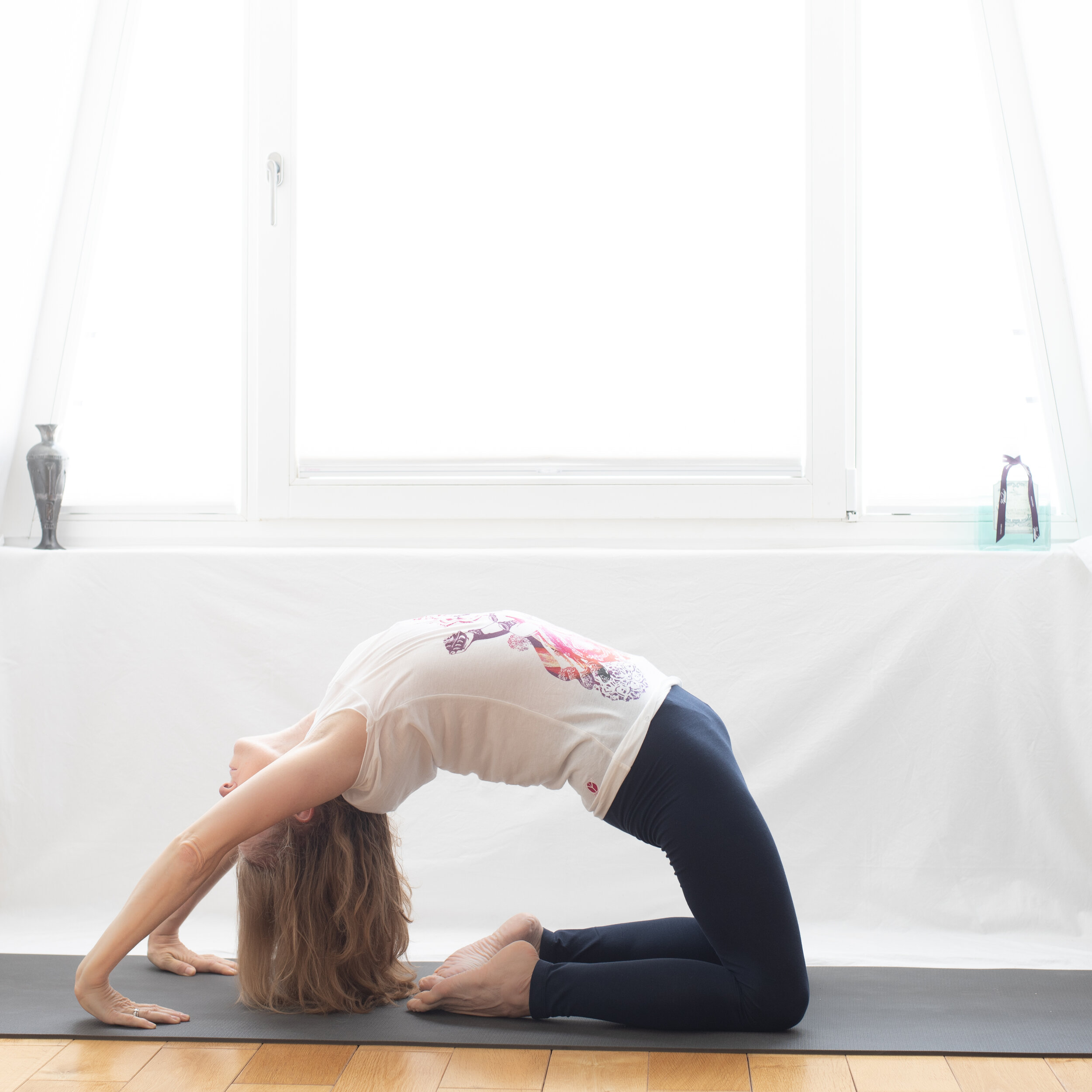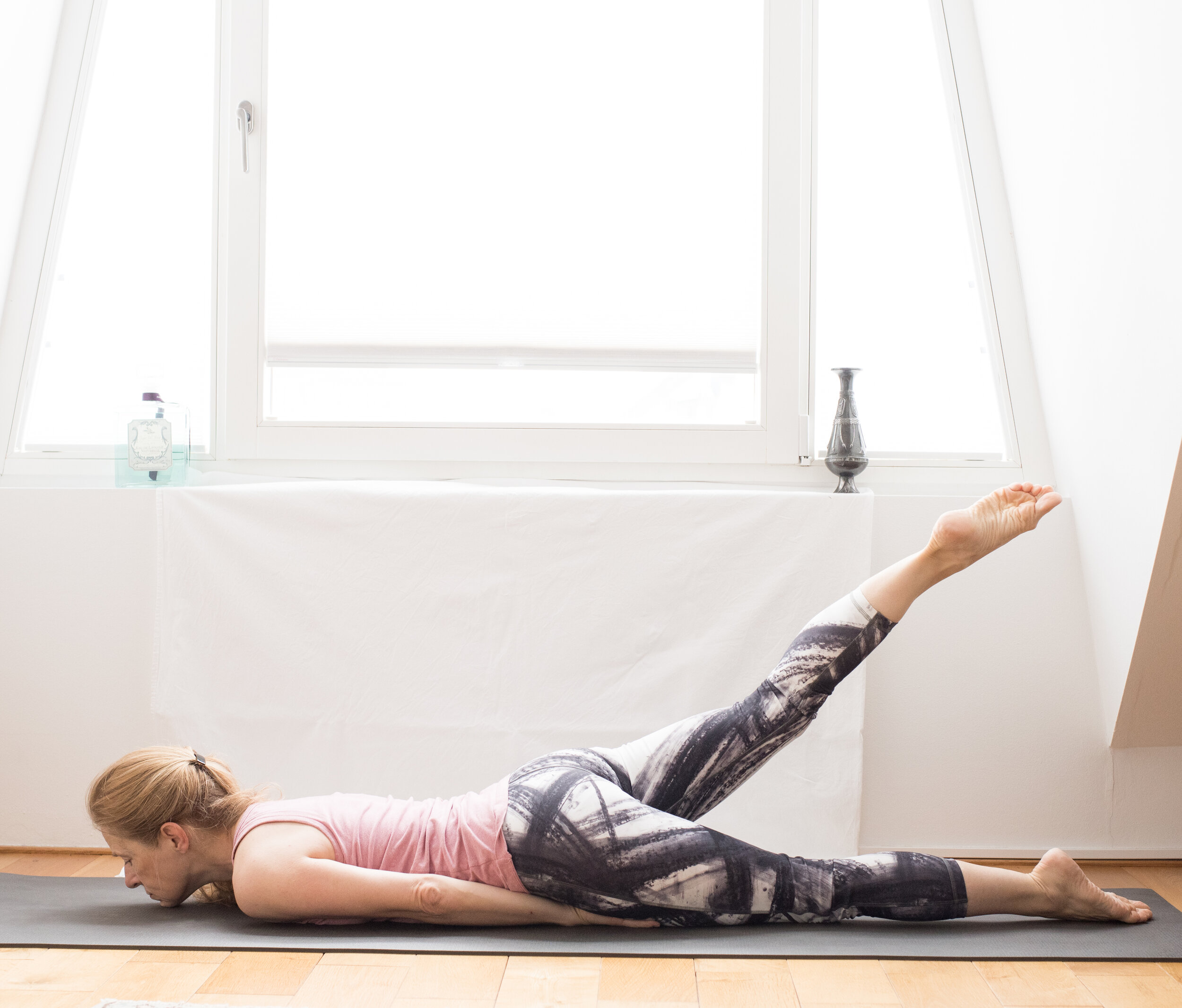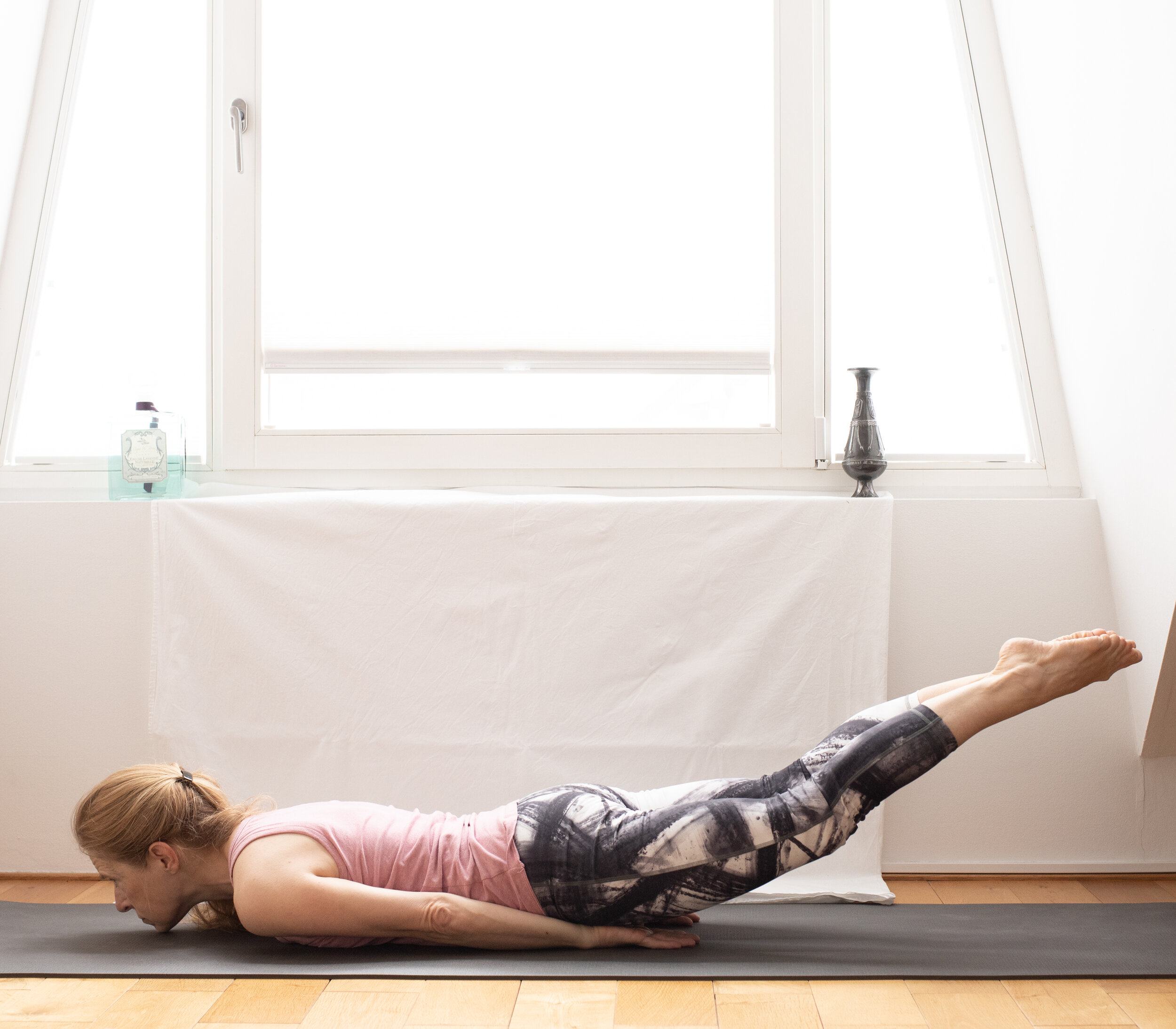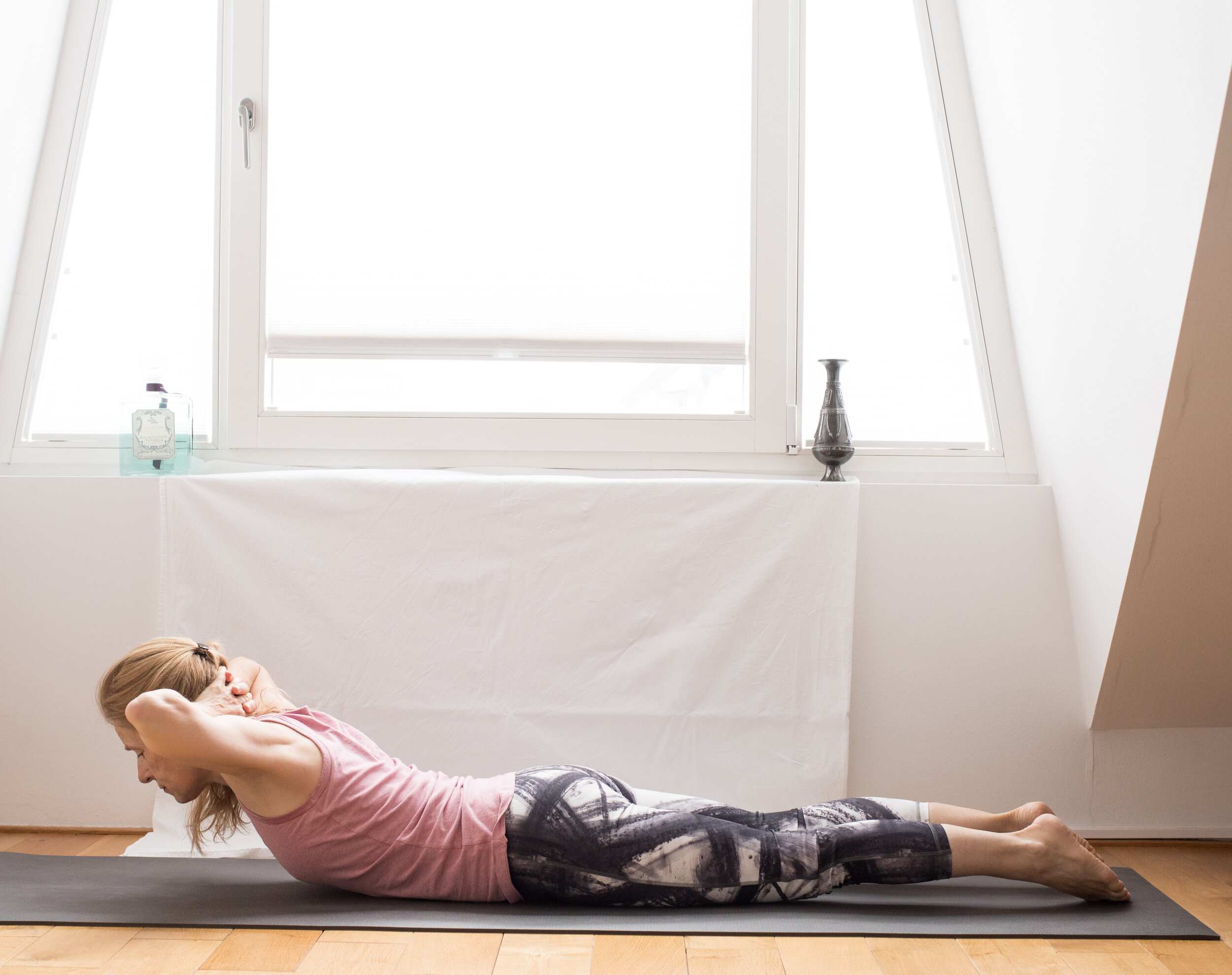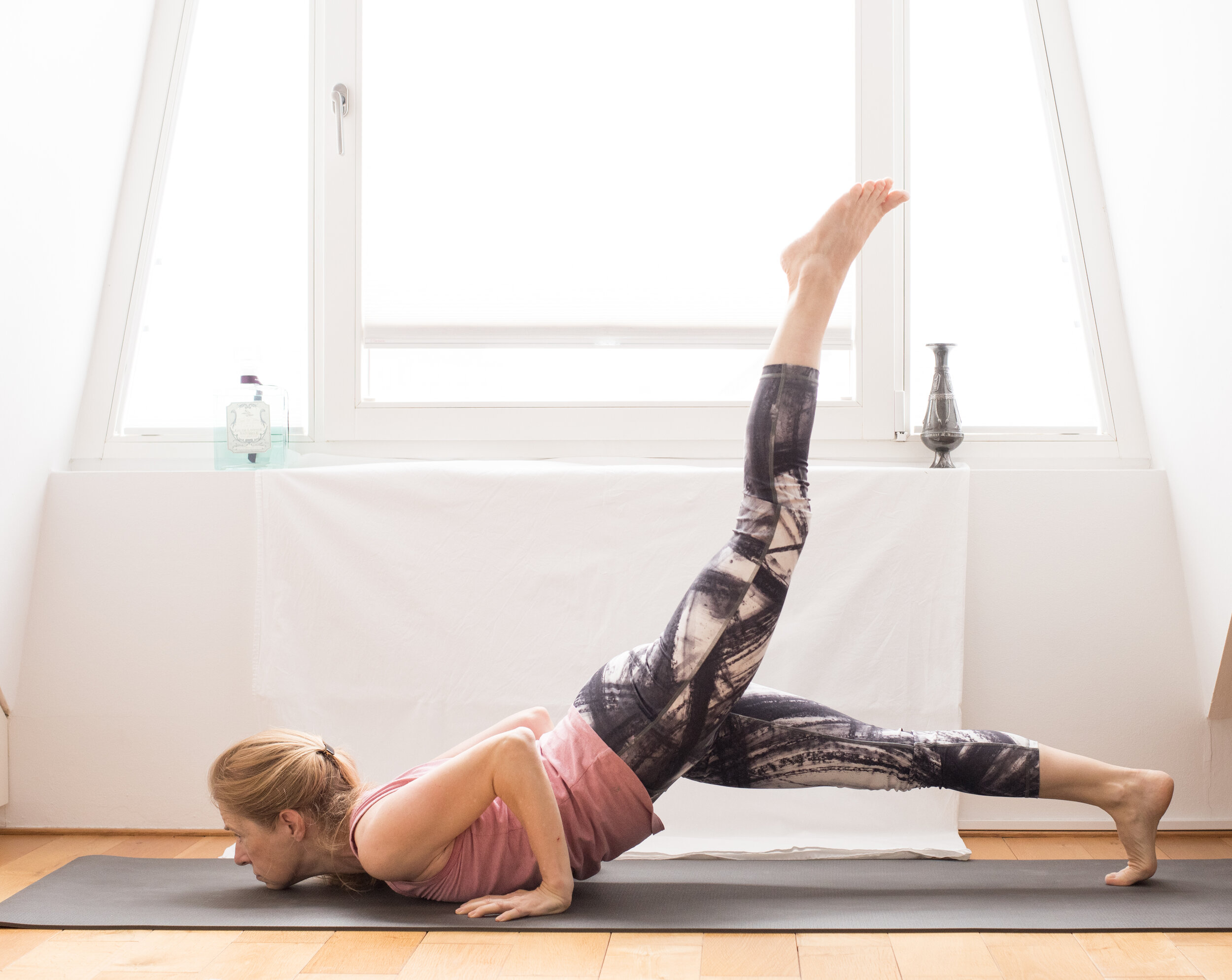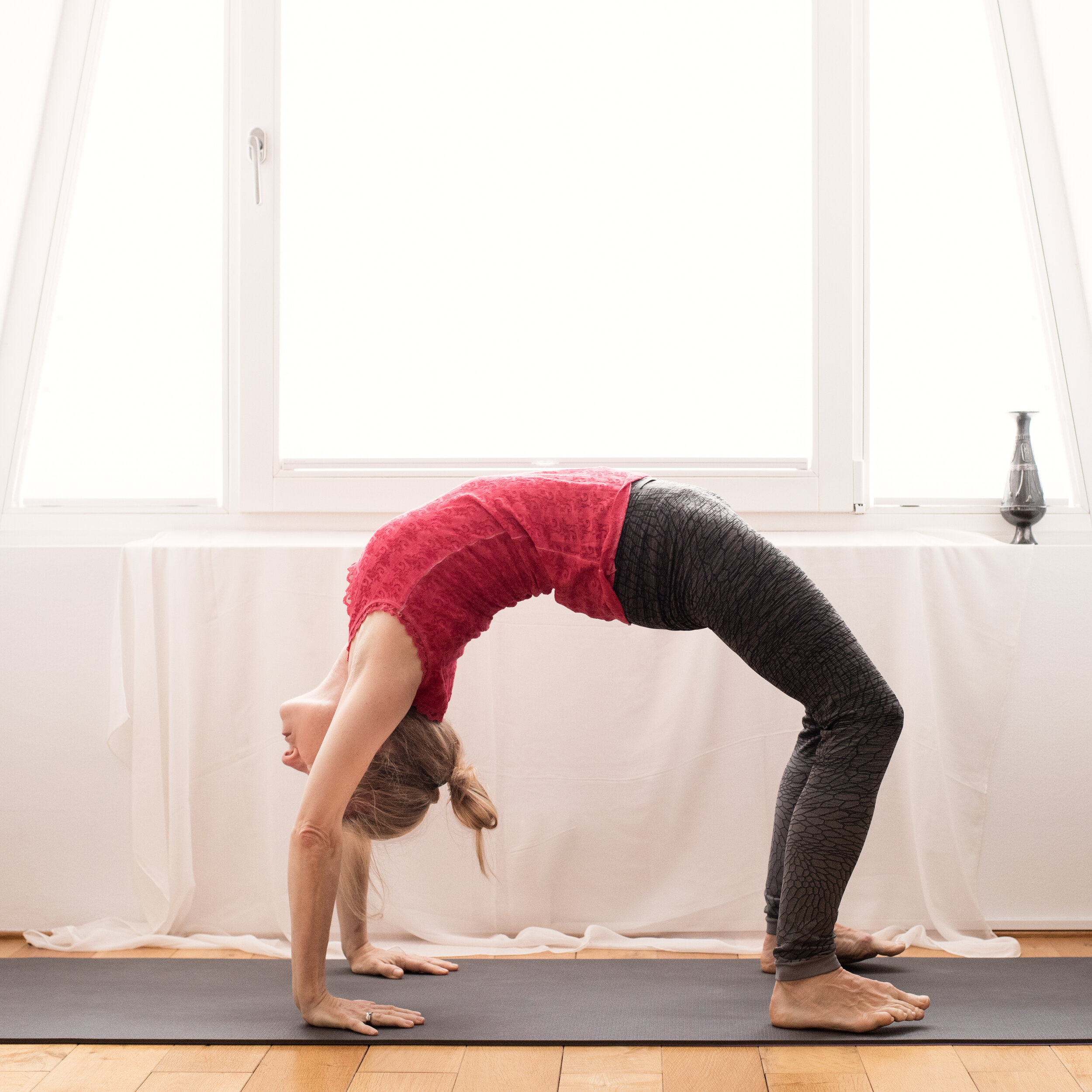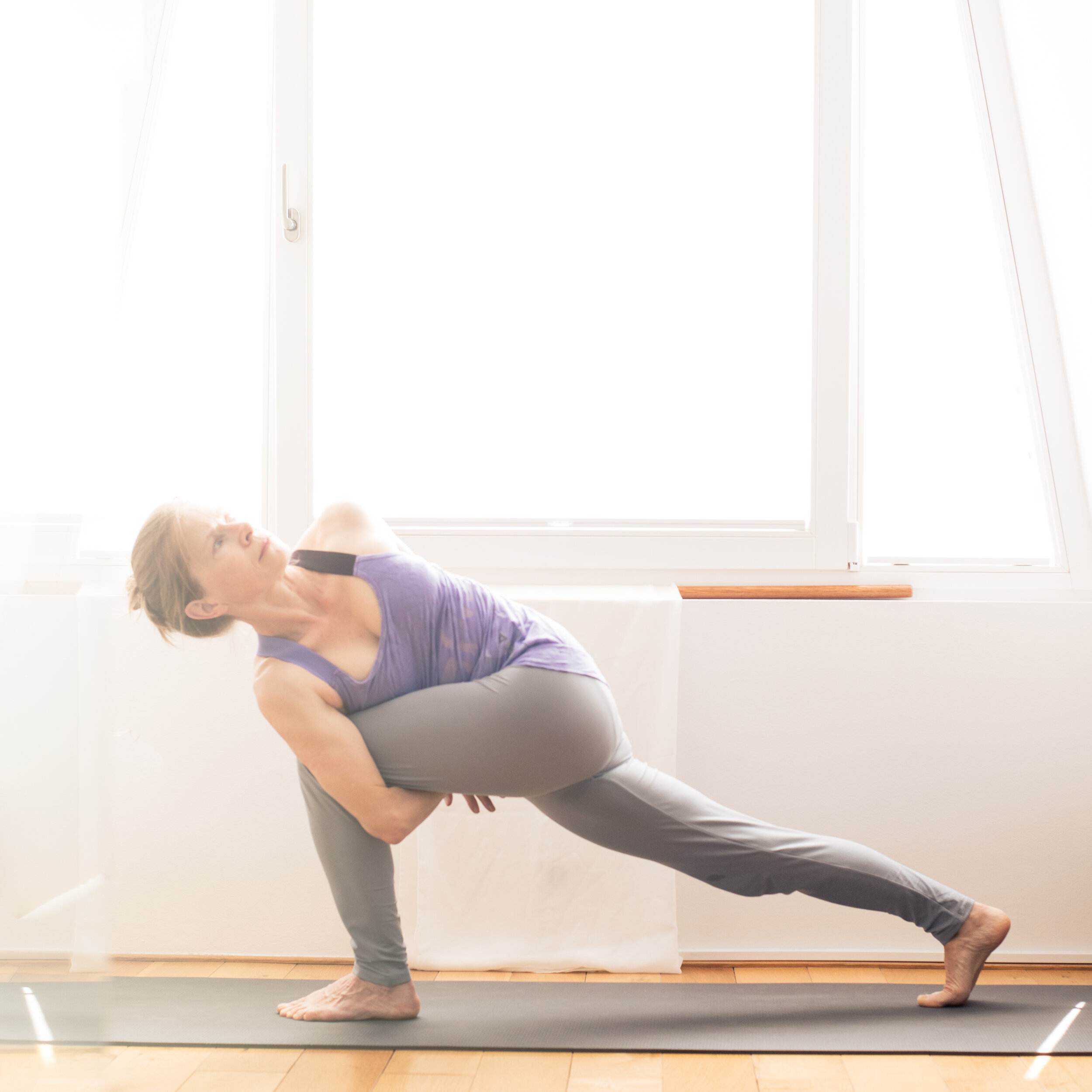It’s not realistic to plan a second practice during 24 hours with additional exercises. One intensive practice per day usually is enough. If there is time for more it’s great, often so many other activities need to be done. So I try to integrate exercises in my morning practice that support asanas I’d like to learn.
Examples are the hands. They need to be strong for many asanas:
Whenever the hands are on the floor it’s good advice to press them firmly against the floor. The fingers support this grip. It’s not that the hands are put nicely on the floor. They must hold the body in all the inversions. The poses become easier when the fundament is firm.
When I realised that I have to put strength into my hands I could suddenly perform mayurasana.
Yet also the vinyasa (jumping forward and backward) require a strong foundation. When the hands become like claws it’s easier to hold the body.
After utkatasana I practice bakasana (see picture). For me bakasana is not only a transition asana, I hold it much longer to get stronger hands. This pose forces to have a firm grip, otherwise the asanas is not possible or one might fall forward. The hands keep the body off from falling forward.
Strong hands are required when working on back bending. How shall my hands be able to crawl to the feet, when they are week. It’s not possible.
These tiny exercises can make a difference. It’s possible to integrate them into every practice.
Also today I practiced 90 minutes. I had a phone call at 9 am, that’s why I had to get up early. On time I was ready for the day and the duties that are part of every live. I forgot to practice urdhva dhanurasana. I don’t care that much. Till the end of August I’ll focus on one goal. It’s to practice more frequently. More frequently is rather spongily. I aim for 6 times a week. When I exceed my average frequency by 20 % I shall be happy. I can set fresh goals after August.I appreciate every day when I practice. Having a regular training is the foundation for every learning. This might sound tribe. Yet the gap between wanting and doing is often huge.
Tomorrow will be the 4th practice in a row. To practice is the goal. No additional mini goals or sub goals are planned. Focus is power. No matter how intensive the practice will be, it’s another step in the direction I want to go.






